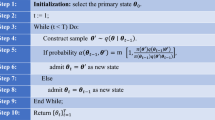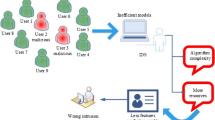Abstract
The usage of the internet and its opportunities bring not only resources availability, services and storage but puts also customer’s privacy at stake. Connected devices share the same pool and Service Level Agreement and are subject to several cyber security challenges. These challenges are either for competitive purposes or to promote the country destruction by warfare attacks.
Deep Learning is robust in easing complex and high dimensionality database analysis to discover relevant predictors. In this paper, we avail the strength of a Weighted Long Short-Term Memory (WLSTM) DN to mine network traffic and prevent the occurrence of attacks. Before attacks identification, the approach pre-processes network traffic using Data Preparation Treatment method to anticipate missing features, and performs after that a weighted conversion on categorical features to discriminate normal behaviors from malicious ones. Afterwards it communicates the weight to the following LSTM classifier. The prevention of attacks is a more challenging task for cyber agent. Thus, Deep belief Network is used to underline joint probabilities over observed traffic and labels.
Access this chapter
Tax calculation will be finalised at checkout
Purchases are for personal use only
Similar content being viewed by others
References
Miniwatts Marketing Group: World Internet Users Statistics and 2018 World Population Stats (2015). https://www.internetworldstats.com/stats.htm
Shah, J.: Understanding and study of intrusion detection systems for various networks and domains. In: 2017 International Conference on Computer Communication and Informatics (ICCCI), pp. 1–6 (2017)
Sreeram, I., Vuppala, V.P.K.: HTTP flood attack detection in application layer using machine learning metrics and bio inspired bat algorithm. Appl. Comput. Inform. 15, 59–66 (2017)
Salaken, S.M., Khosravi, A., Nguyen, T., Nahavandi, S.: Extreme learning machine based transfer learning algorithms: a survey. Nerocomputing 267, 516–524 (2017)
Samaneh, M., Ali, G.: Application of deep learning to cybersecurity: a survey. Neurocomputing 347, 149–176 (2019)
Kenneth, K., Vitalice, O., Kibet, L.: Cyber security challenges for IoT-based smart grid networks. Crit. Infrastruct. Prot. 25, 36–49 (2019)
Manuel, L., Belen, C., Antonio, S.: Application of deep reinforcement learning to intrusion detection for supervised problems. Expert Syst. Appl. 141, 112963 (2020)
Markus, R., Sarah, W., Deniz, S., Dieter, L., Hotho, A.: A survey of network-based intrusion detection data sets. Comput. Secur. 86, 147–167 (2019)
Mahmoud, K., Youssef, I.: Phishing detection: a literature survey. IEEE Commun. Surv. Tutor. 15, 2091–2121 (2013)
Douzi, S., Amar, M., El Ouahidi, B.: Advanced phishing filter using autoencoder and denoising autoencoder. In: Proceedings of the International Conference on Big Data and Internet of Thing, pp. 125–129 (2017)
Douzi, S., Amar, M., El Ouahidi, B., Laanaya, H.: Towards a new spam filter based on PV-DM (paragraph vector-distributed memory approach). Procedia Comput. Sci. 110, 486–491 (2017)
Wu, Z., Wang, J., Hu, L., Zhang, Z., Wu, H.: A network intrusion detection method based on semantic re-encoding and deep learning. J. Netw. Comput. Appl. (2020)
Zhang, J., Ling, Y., Fu, X., Yang X.: Model of the intrusion detection system based on the integration of spatial-temporal features. Comput. Secur. 89, 101681 (2020)
Kim, J., Kim, J., Thu, H.L.T., Kim, H.: Long short term memory recurrent neural network classifier for intrusion detection. In: Proceedings of 2016 International Conference on Platform Technology and Service (PlatCon) (2016)
Jin-Young, K., Seok-Jun, B., Sung-Bae, C.: Zero-day malware detection using transferred generative adversarial networks based on deep autoencoders. Inf. Sci. 460–461, 83–102 (2018)
Henrickson, K., Filipe, R., Francisco Camara, P.: Chapter 5 - data preparation. In: Mobility Patterns, Big Data and Transport Analytics, pp. 73–106. Elsevier (2019)
Stefan, S., Milad, M., Bjorn, R., Christoph, N.: Social media analytics – challenges in topic discovery, data collection, and data preparation. Int. J. Inf. Manage. 39, 156–168 (2018)
Hosmer Jr., D.W., Lemeshow, S., Sturdivant, R.X.: Applied Logistic Regression. John Wiley, New York (2013)
Julie, E.G., KeZu, C.: Short-term ozone exposure and asthma severity: weight-of-evidence analysis. Environ. Res. 160, 391–397 (2018)
Siddiqi, N.: Credit Risk Scorecards: Developing and Implementing Intelligent Credit Scoring. Wiley, Hoboken (2012)
Aggarwal, P.: Sharma, S.K.: Analysis of KDD dataset attributes-class wise for intrusion detection. Procedia Comput. Sci. 57, 842–851 (2015)
Amar, M., EL Ouahidi, B.: Hybrid intrusion detection system using machine learning. Netw. Secur. 2020(5), 8–19 (2020)
Author information
Authors and Affiliations
Corresponding author
Editor information
Editors and Affiliations
Rights and permissions
Copyright information
© 2020 Springer Nature Switzerland AG
About this paper
Cite this paper
Amar, M., EL Ouahidi, B. (2020). A Weighted LSTM Deep Learning for Intrusion Detection. In: Belkasmi, M., Ben-Othman, J., Li, C., Essaaidi, M. (eds) Advanced Communication Systems and Information Security. ACOSIS 2019. Communications in Computer and Information Science, vol 1264. Springer, Cham. https://doi.org/10.1007/978-3-030-61143-9_14
Download citation
DOI: https://doi.org/10.1007/978-3-030-61143-9_14
Published:
Publisher Name: Springer, Cham
Print ISBN: 978-3-030-61142-2
Online ISBN: 978-3-030-61143-9
eBook Packages: Computer ScienceComputer Science (R0)




